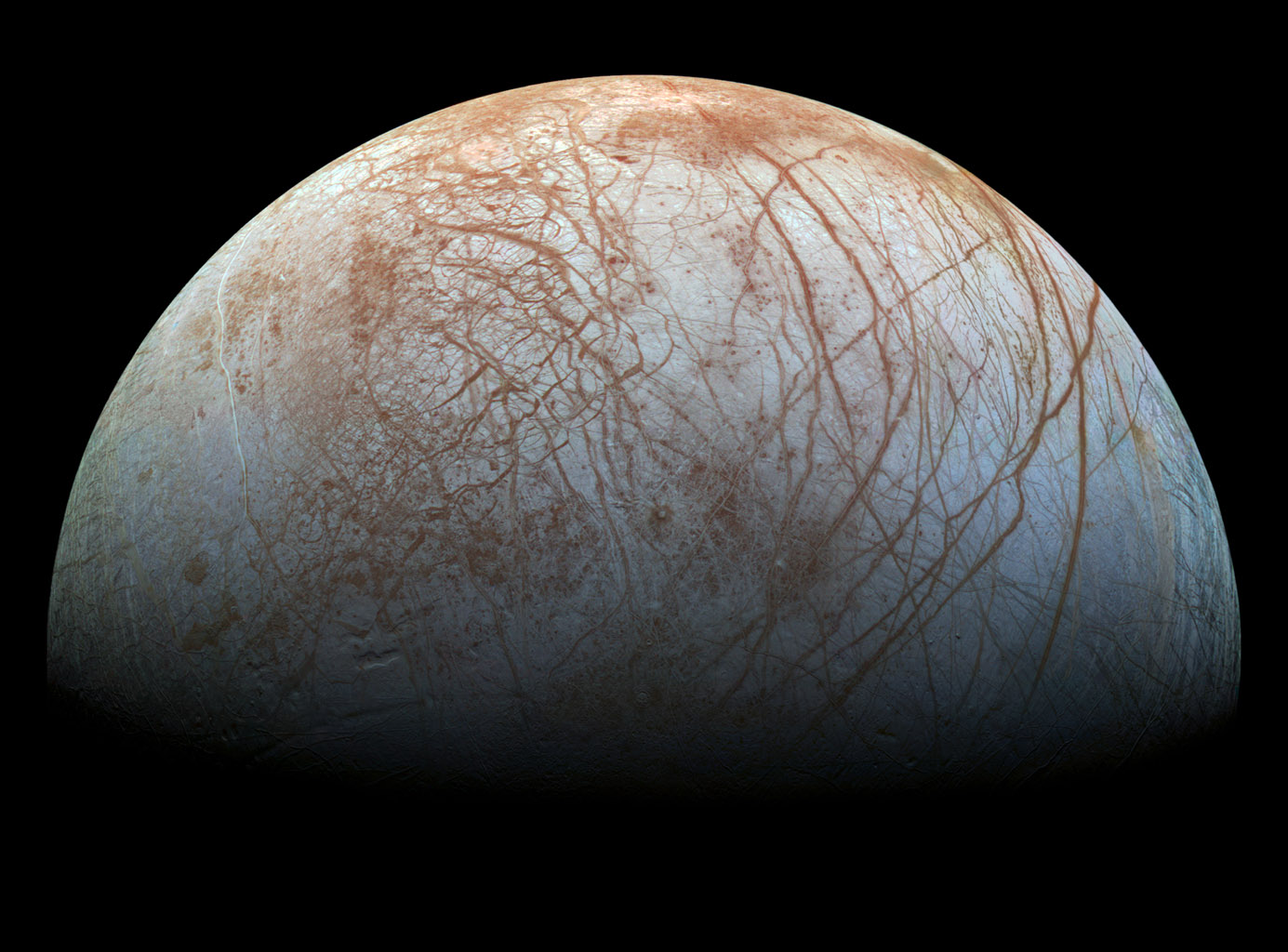
The quest to explore Jupiter's ocean-harboring moon Europa has taken a big step forward.
The White House's fiscal year 2016 budget request for NASA, which was released Monday (Feb. 2), allocates $18.5 billion to the space agency, including $30 million to formulate a mission to Europa, perhaps the solar system's best bet to host alien life. NASA has been studying a potential Europa mission for a while now, but the new budget proposal signals a commitment from the White House that wasn't there before.
"For the first time, the budget supports the formulation and development of a Europa Mission, allowing NASA to begin project formulation, Phase A," NASA officials wrote in a summary of the proposed budget. [Photos: Europa, Mysterious Icy Moon of Jupiter]
Indeed, the new budget request assumes multiple years of funding for a Europa mission, said NASA Chief Financial Officer David Radzanowski.
"The current funding profile would assume a launch in the mid-2020s," Radzanowski told reporters during a conference call Monday.
It's unclear at the moment just how much NASA and the Europa project will actually get in the 2016 fiscal year (FY), which begins Oct. 1, 2015. Congress must approve the final budget, which often looks quite different than the one proposed by the White House.
For example, the Obama administration allocated $15 million for early work on a potential Europa mission in its FY 2015 budget request, but Congress later upped that to $100 million.
Get the Space.com Newsletter
Breaking space news, the latest updates on rocket launches, skywatching events and more!
NASA appears to be zeroing in on a mission that would feature multiple flybys of Europa — perhaps something along the lines of the Europa Clipper, a concept being developed by agency scientists and engineers. Once in orbit around Jupiter, the Clipper would make 45 flybys of the 1,900-mile-wide (3,100 kilometers) Europa over the course of 3.5 years, as the concept is currently envisioned.
Europa is thought to possess an ocean of liquid water under its icy shell. During its many flybys, the Clipper would confirm and study that ocean, yielding insights about its depth, salinity and conductivity, among other characteristics.
The Clipper would also measure and map Europa's ice shell, returning data that could be useful for a potential future mission to the moon's surface.
"Sounding the ice shell would be key," said David Senske of NASA's Jet Propulsion Laboratory in Pasadena, California, Europa Clipper pre-project deputy project scientist.
"We have a preconceived notion of what a lander looks like," Senske told Space.com in December at the annual fall meeting of the American Geophysical Union in San Francisco. "What we find may not support our preconceived notion."
If everything goes according to plan, the Europa Clipper could be ready to launch as early as 2022, Senske said. The mission would probably cost about $2 billion.
The Europa mission will really start coming into focus just a few months from now: NASA aims to select science instruments for the mission this spring, NASA Administrator Charles Bolden said Monday. (The agency asked scientists around the world to propose instruments in July 2014.)
Follow Mike Wall on Twitter @michaeldwall and Google+. Follow us @Spacedotcom, Facebook or Google+. Originally published on Space.com.
Join our Space Forums to keep talking space on the latest missions, night sky and more! And if you have a news tip, correction or comment, let us know at: community@space.com.

Michael Wall is a Senior Space Writer with Space.com and joined the team in 2010. He primarily covers exoplanets, spaceflight and military space, but has been known to dabble in the space art beat. His book about the search for alien life, "Out There," was published on Nov. 13, 2018. Before becoming a science writer, Michael worked as a herpetologist and wildlife biologist. He has a Ph.D. in evolutionary biology from the University of Sydney, Australia, a bachelor's degree from the University of Arizona, and a graduate certificate in science writing from the University of California, Santa Cruz. To find out what his latest project is, you can follow Michael on Twitter.









